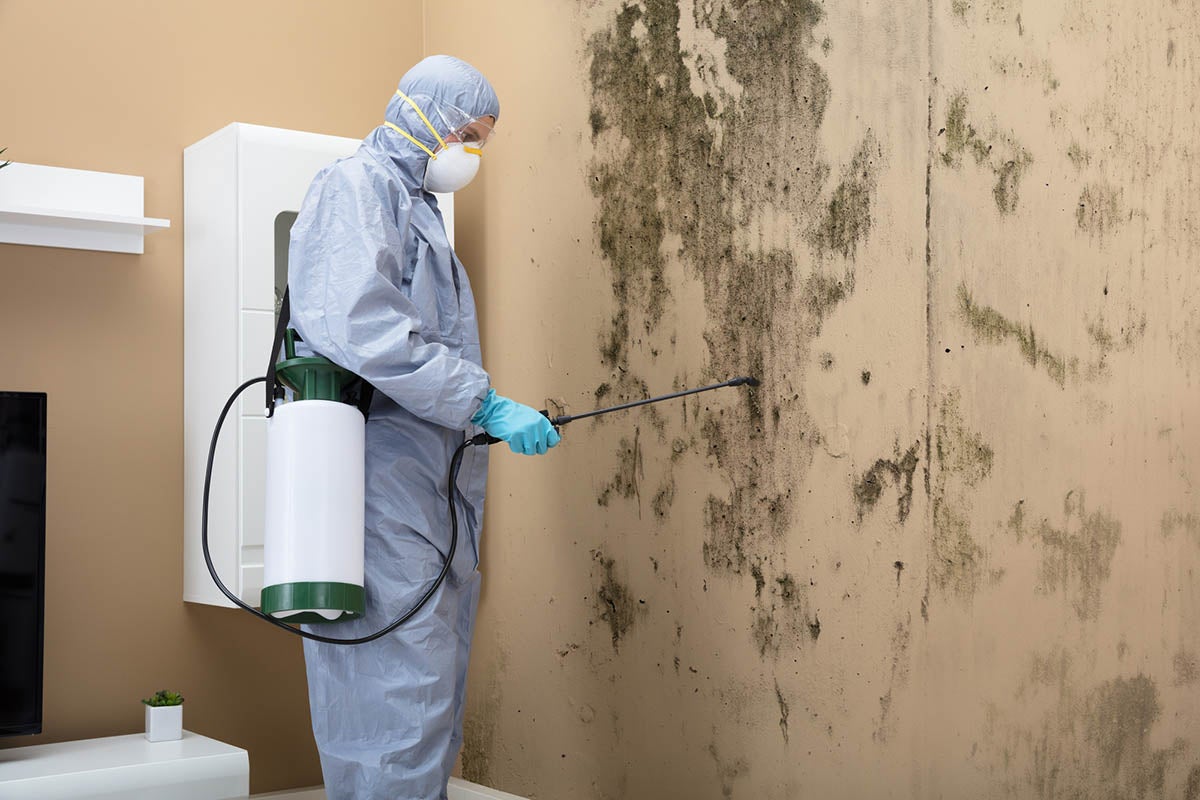After Mold Remediation Strategies for Clean Rooms
After Mold Remediation Strategies for Clean Rooms
Blog Article
Specialist Tips for Article Mold And Mildew Remediation Success
In the world of mold removal, successfully removing mold is only half the fight; the true difficulty exists in avoiding its reappearance. By sticking to experienced tips and best practices, people can safeguard their areas against mold and mildew resurgence and maintain a healthy and balanced interior environment.
Screen Moisture Degrees Routinely
After finishing mold remediation treatments, maintaining optimal moisture degrees is critical to avoid mold and mildew re-growth and ensure a healthy indoor atmosphere. High humidity degrees over 60% create a helpful environment for mold and mildew to prosper, making routine keeping an eye on a proactive procedure to prevent any kind of future mold concerns.
Additionally, establishing a regular schedule for humidity checks, specifically in high-risk locations such as shower rooms, cellars, and kitchens, is a positive strategy to mold prevention. By regularly keeping an eye on humidity levels, home proprietors can successfully reduce the threat of mold and mildew reoccurrence and preserve a healthy indoor environment post-remediation.
Conduct Thorough Inspections Post-Remediation
Adhering to the conclusion of mold removal procedures, it is vital to carry out thorough evaluations to verify the performance of the remediation procedure. These post-remediation assessments are important in guaranteeing that the mold problem has actually been successfully dealt with and that there is no reappearance or continuing to be mold and mildew development. Assessments need to be performed by qualified specialists that have know-how in recognizing mold and mildew and assessing interior air quality.
Throughout these inspections, various methods such as visual analyses, air tasting, and surface tasting might be used to completely evaluate the remediated locations. Visual evaluations entail a detailed evaluation of the properties to look for any type of noticeable indicators of mold and mildew development or water damages. Air sampling aids in determining the airborne mold spore levels, while surface tasting can identify mold particles on surfaces.
Implement Proper Air Flow Approaches
After guaranteeing the efficiency of the mold and mildew remediation process via extensive examinations, the following critical action is to focus on applying correct ventilation strategies. Sufficient air flow is important in preventing mold reoccurrence by managing wetness levels and promoting air circulation. To attain this, it is recommended to utilize exhaust followers in areas susceptible to high moisture, such as bathrooms and kitchen areas. Additionally, opening up doors and windows when climate permits can aid enhance airflow and lower wetness accumulation. Air dehumidifiers and purifiers are likewise valuable tools in keeping ideal interior air quality.
Proper air flow not only aids in protecting against mold development but also contributes to the overall wellness and comfort of passengers. By guaranteeing ample ventilation throughout the residential property, you can minimize the danger of mold regrowth and develop a much healthier living atmosphere.

Use Mold-Resistant Products for Repair Works
To improve the long-term effectiveness of mold and mildew remediation initiatives, including mold-resistant materials for fixings is essential in minimizing the threat of future mold and mildew growth. Mold-resistant products are designed to stand up to wetness and inhibit mold development, making them a crucial option for locations susceptible to moisture and moisture. When repairing locations impacted by mold, using materials such view it as mold-resistant drywall, mold-resistant paints, Our site and mold-resistant caulking can help avoid mold recurrence.
Mold-resistant drywall is a superb choice to typical drywall in locations like washrooms and cellars where moisture levels are higher. When exposed to damp conditions, this kind of drywall has an unique covering that stands up to mold growth even. Furthermore, utilizing mold-resistant paints consisting of antimicrobial agents can even more hinder mold advancement on wall surfaces and ceilings.
In locations where wetness is usual, such as bathrooms and kitchens, making use of mold-resistant caulking around windows, sinks, and bathtubs can assist secure out water and avoid mold from holding in splits and crevices. By purchasing these mold-resistant products during fixings post-remediation, you can dramatically minimize the chance of future mold and mildew concerns and preserve a healthier interior setting.
Maintain Tidiness and Address Water Issues
After mold removal, it is crucial to keep a tidy environment to avoid the regrowth of mold and mildew. Leaks, water breach, or high moisture levels can produce the ideal reproduction ground for mold, so it is important to deal with any water-related problems right away.
To keep cleanliness, think about making use of HEPA filters in vacuum cleaners and air purifiers to trap mold spores and avoid their blood circulation in the air. Moreover, guaranteeing correct ventilation in areas prone to moisture build-up, such as cooking areas image source and shower rooms, can assist keep humidity degrees in check. By staying alert about cleanliness and addressing water concerns without delay, you can successfully stop mold reinfestation and maintain a healthy interior environment.
Verdict

In the world of mold and mildew removal, efficiently eliminating mold is only half the fight; the real challenge lies in avoiding its reappearance. After finishing mold and mildew remediation treatments, preserving optimal moisture degrees is essential to protect against mold and mildew re-growth and guarantee a healthy indoor setting. High humidity degrees over 60% develop a helpful environment for mold and mildew to flourish, making routine monitoring a proactive procedure to prevent any kind of future mold and mildew concerns.
To boost the lasting performance of mold and mildew removal initiatives, including mold-resistant materials for repair work is vital in minimizing the risk of future mold development. After mold removal, it is important to maintain a tidy atmosphere to avoid the regrowth of mold.
Report this page